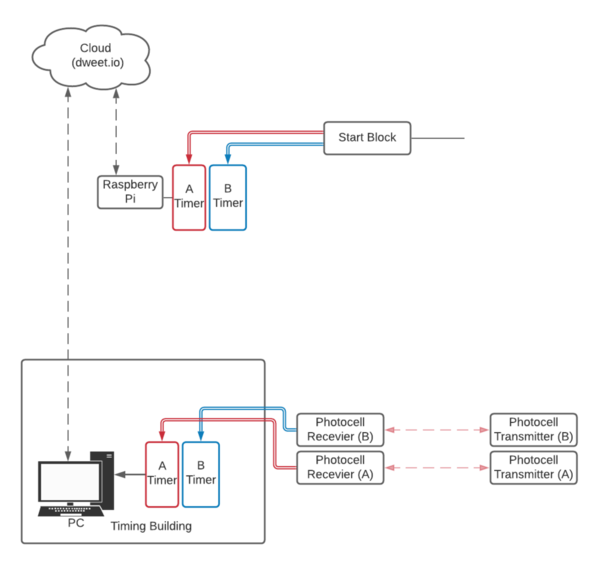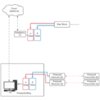 With split second now allowing connections to two timers, I thought it would be a good opportunity to think about some new methods of wireless timing.
With split second now allowing connections to two timers, I thought it would be a good opportunity to think about some new methods of wireless timing.
Per the FIS timing booklet, all homologated timing solutions require the use of 4 synchronized timers: System A and System B at both the start and the finish. It does not specify exactly, however, how data transmission from the start must occur. Per page 10 of the timing booklet:
"This allows race organizers to use many types of timing solutions without wires as long as these 4 timers are in place and are used to verify the results. If times are generated by a timing solution other than system A or B in all cases these times must be checked against system A and must match exactly. In case results deviate from system A, the competition must be evaluated on the A system times as per the normal timing set-up rules and procedures"
Many of the systems currently commercially available in the US use radio transmitters to send impulses from the start to the finish, and correct for the delay. The disadvantage of this system is that it invites the possibility for the wirelessly transmitted impulse to disagree with the impulse recorded to tape at the start. Because impulses cannot be recovered, a lost wireless impulse could mean going through an EET procedure to recover from tape at the start.
My goal is to send the actual Time of Day data from the start timer, not impulses. This removes the possibility of any disagreement, however small, between data collected at the start and at the finish.
Using the new "2nd timer" functionality of split second, it is possible to connect both the System A start timer and the System A finish timer to the software simultaneously to produce real time results. The problem is figuring out how to connect a timer with a serial port to a computer that is far away.
To solve that problem, I used a $10 Raspberry Pi Zero W microcomputer and some custom software. The Raspberry Pi is connected to the serial port of the timer at the start, and uses the internet to send data from the timer to the cloud. It can work off of any available internet connection, wired, WiFi, cell phone hotspot, etc.
The results PC at the finish runs software to read the timing data from the cloud and send it to a virtual serial port. Split Second (or any results software that supports 2 timer connections) can then read this data.
The main drawback of this approach is that it depends on an internet connection. However, with the constant expansion of wireless networks and the increasing availability of internet connections at ski resorts I think this problem will continue to get smaller. I believe that the simplicity and low cost warrant some further investigation, and I would love to collaborate with anyone who is interested!
I've attached a diagram of my longwinded description, and a YouTube video of it in action in my living room.
Zach

